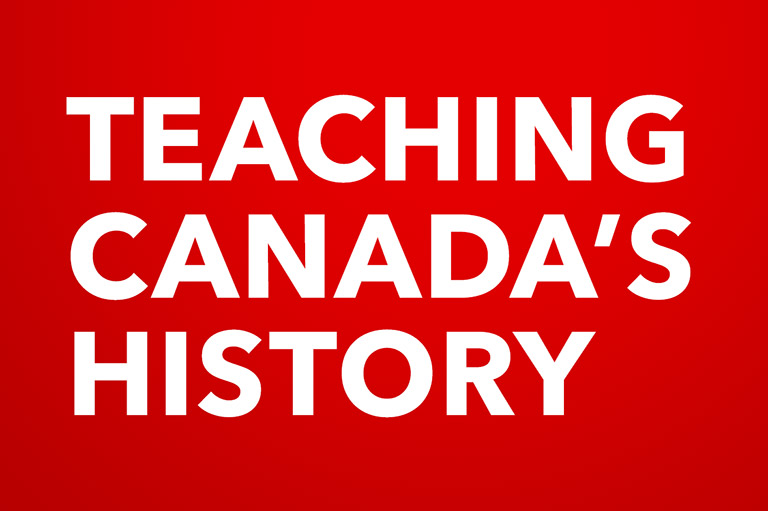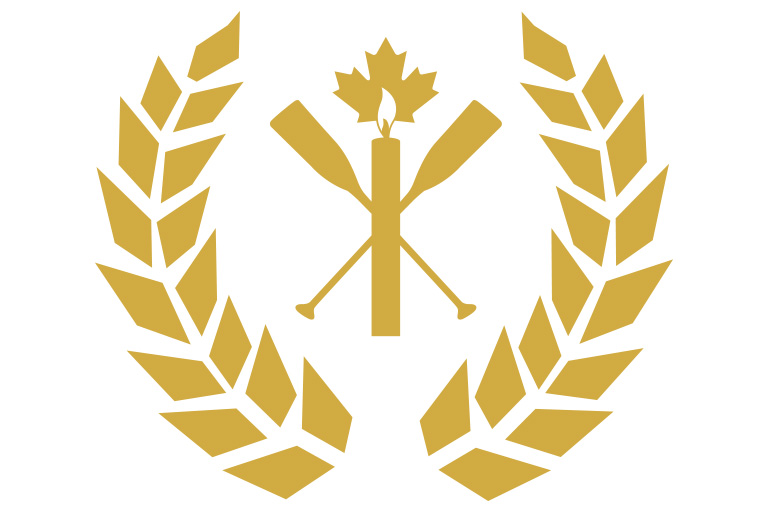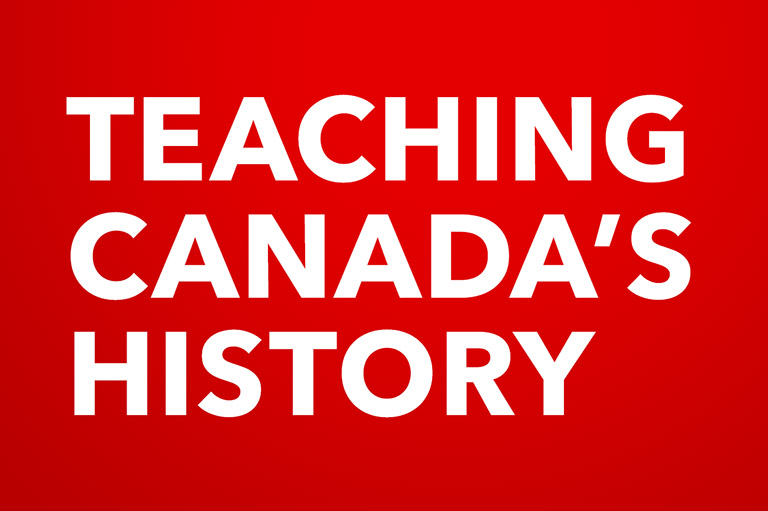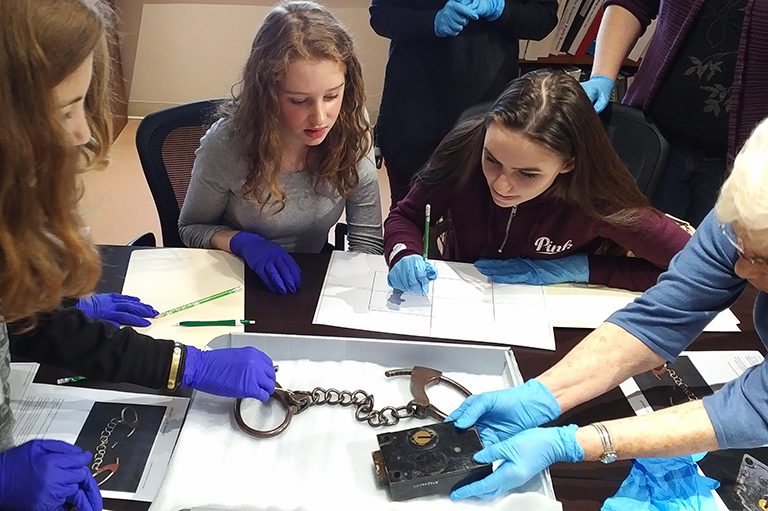Teaching Canada's History: 2019 Excellence in Teaching Finalists
Canada’s History recently spoke with the finalists for the 2019 Governor General’s History Award for Excellence in Teaching. This award recognizes teachers from across the country for their exceptional work in teaching Canadian history. It is also an opportunity to promote and facilitate the sharing of best practices and innovative teaching ideas within Canada’s history education community.
We would like to thank voicEd Radio for their support in producing the group podcasts. VoicEd Radio is a 24/7 Internet-based Radio Station dedicated to both broadening and deepening the conversations we have about education. You can find out more about voicEd Radio here.
In our interviews, the teachers gave insight into their teaching practices, from how to keep students engaged in the classroom to resources for their different teaching contexts.
We invite you to listen to the interviews with the finalists below and learn more about their projects and the important work they are doing to research, interpret, and share the stories of the past.
Trevor Arndt, Heidi Crowley, and Heather Jefkins
Huntsville High School, Huntsville, ON; Gray Academy, Winnipeg, MB; Assiginack Public School, Manitowaning, ON
In the “History Portfolio” project, Trevor Arndt’s students assumed the role of a person from Canadian history and followed them through defining moments of the 20th century. Students voted in period elections and experienced trials from different regions at different times in history. To finish, students wrote memoirs of their character’s experiences during the project.
Students in Heidi Crowley’s Grade 11 Canadian History class studied the recent controversies surrounding monuments. After discussing the different sides of the debate and visiting local monuments, students created posters and presentations evaluating the history and impact of different Canadian monuments.
Heather Jefkins’ students completed a variety of activities to understand the creation and importance of different fabric craft works. The project, “Weaving Stories and Stitching History,” allowed students to learn through hands-on creation of fabric pieces. Students also interacted with community members and learned about history through weaving and quilting.
David Brian and Stephen Punga, Jean Moir, and Leanne Young
ASCIS, Windsor, ON; Noel Booth Elementary School, Langley, BC; Orillia Secondary School, Orillia, ON
David Brian and Stephen Punga created an opportunity for students to use digital technology to expand upon histories in their community. In their “Lost Cemeteries” project, students used GIS to map the graves of Black Canadians in Essex County.
“Gladys We Never Knew” is a teaching module that invites students to understand Indigenous perspectives through personal and place-based connections. Jean Moir’s students interact with a variety of sources and reflect on their learning over the course of the module.
Leanne Young’s students created “Indigenous Action Plans” to contribute towards reconciliation. Through a series of activities, students learned about issues facing Indigenous people. In groups, students focused on specific issues and developed their plans to further the aims of truth and reconciliation.
Kayla Dallyn and Genevieve Soler, Dwayne Jeffery, and Caelin Webber
Exshaw School, Exshaw, AB; Lloydminster Comprehensive High School, Lloydminster, AB; Wapanohk Community School, Thompson, MB
Kayla Dallyn and Genevieve Soler worked with Stoney Nakoda Elders in their community to help students trace their family lineage. After creating family trees, students identified “heroes” among the members of their family. Students sculpted a bust of their “hero” that was then displayed publicly in a pop-up exhibit for National Indigenous Peoples Day.
Students in Dwayne Jeffery’s class worked with the six historical thinking concepts over the course of the entire school year. Through multiple activities, students gained the tools necessary to create a final museum exhibit project and presented it to the community.
The project “Treaties: Spirit, Intent and Broken Promises”, created by Caelin Webber, included multiple activities involving poetry, theatre, and primary source analysis. For their final project, Caelin Webber’s students created infographics connecting modern issues to historic treaty precedents.
Emilia Adorante
St. Elizabeth Catholic High School, Thornhill, ON
Emilia Adorante’s students applied their knowledge of history to a computer game platform. This project allowed students to gain experience with coding while exercising their creativity to create a game with a historic context.
René Beaudoin
Collège Laflèche, Trois-Rivières, QC
René Beaudoin teaches heritage interpretation techniques to future tourism industry professionals. His course aims to help students master some basic knowledge (the historical framework) as well as research methods, content analysis, identification of the message to be conveyed depending on the target clientele, and the development of interpretive products. To reach these objectives, the students developed an exhibition on the history of spoken French in Quebec. In doing so, they came to understand that, regardless of the location, culture evolves with the advance of history and the contributions of the various cultural groups that make up its population; they also grasped the concepts of continuity and cultural change, understood the causes and consequences of these changes, and were able to plan for their future (without having to gaze into a crystal ball)!
Robert Bell
Dundas Central Public School, Dundas, ON
Students in Robert Bell’s 5/6 class researched the Spanish Influenza through the records of a young girl named Hazel who died of the disease in 1918. Hazel attended the same school as the students in Bell’s class. The project culminated in a student-curated exhibit at the Dundas Museum that focused on Hazel’s life and the impact of the Spanish Influenza on their community.
Tienneke Calder, Maureen Kelly-Gibson, and Elizabeth Howie
Calgary Academy, Calgary, AB
Grade 7 students at Calgary Academy created projects responding to the question, “What actions can we take to further the spirit and intent of the journey to reconciliation?” Students created projects in multiple formats that they presented to parents and other members of the community at a school event.
Véronique Charlebois
Collège Héritage de Châteauguay, Châteauguay, QC
This academic project is intended to serve as a gateway to the recognition of heritage elements in the Châteauguay region and its surrounding communities through the use of digital or conventional (film) photography. After receiving their training, students choose a subject to photograph and carry out research on it, employing an analytical approach that uses historical thinking as its point of reference. By then presenting the project in a museum, both the students and the local community get to appreciate the results of the collective work. When the exhibition closes, the students’ works are taken down and then presented in various seniors’ residences.
Sarah Dewey
Leahurst College, Kingston, ON
Sarah Dewey’s students exercised their creativity to create responses to the impacts of the transcontinental railway on various aspects of Canadian history. Through artwork, songs, and poetry students explored the ways that the railroad both united and divided Canada.
Judette Dumel
École élémentaire publiques Gabrielle-Roy, Ottawa, ON
This project set out to explore the role that blacks played in building Canada and their place as members of our country’s cultural tapestry. Students looked into black immigration from the time of the explorers and colonization to the present day. They researched figures who set foot on Canadian soil, such as Mathieu Da Costa, Olivier Le Jeune, Harriet Tubman, and Jean Augustine. They submitted the information they gathered in the form of sketches, poems, dances, and paintings, which were then presented to the school community.
Martin Landry
Collège Regina Assumpta, Montréal, QC
For this project, students use archival material to create a 3-minute video on the history of Canadians during the Second World War. They are required to use video editing and digital integration software. Each group starts by selecting a topic (compulsory); once all groups have made their selection, they can begin to exchange information. Copyright compliance and the use of historical archives are at the core of this pedagogical project. Students do their own narration. The historical content must highlight links between Second World War history and Canadians. The video must include a minimum of 20 visual archives, including historical photos, a video excerpt from the era, official documents, a period advertisement, a newspaper clipping, and a caricature.
Danita Lewis
Southgate Middle School, Campbell River, BC
“First Nations Studies” is a program created by Danita Lewis that engages students in learning about Indigenous people in Canada. The program focuses on understanding concepts through interaction with historic documents as well as hands-on activities.
Jean-Philippe Payer
L’Odyssée, Quebec, QC
The class-museum project places students in a situation involving complex learning and evaluation processes, as it mobilizes a set of resources requiring research, analysis, and data selection. Students must learn how to look for information on a historical reality, analyze it, and interpret their discoveries. They must employ information and communications technology both as a research tool and as an aid to their accomplishments, notably through the use of 3D augmented and virtual reality. As part of this project, students interpret the historical relevance of modern-day social realities or artefacts from local museums using video montages available in 3D augmented and virtual reality. The project has extended beyond the school with an online teaching toolkit, resulting in the participation and collaboration of several classes throughout Canada and around the world.
Émilie Pelland
École secondaire Villa française des Jeunes, Elliot Lake, ON
Émilie Pelland is a teacher who is always looking for creative ways to incorporate history into her English classes. Her goal is to make history more relevant for her students and to provide them with an unforgettable learning experience. When a student expressed a desire to meet a holocaust survivor, Ms. Pelland contacted Eva Olsson and invited her to come meet the student. She then extended an invitation to the CSPGNO as a whole, so that all students could have the opportunity to hear the message of hope. In her English class, students read Secret Path by Gord Downie and then had a chance to meet a survivor of the residential school system. The students then visited the residential school in Spanish, Ontario.
Michael Pitblado and Agnieszka Chalas
Leahurst College, Kingston, ON
Michael Pitblado and Agnieszka Chalas’ “Banksy Project” invited students to use artwork and the format of Banksy’s art pieces to raise awareness about some of the issues that affect Indigenous peoples. The pieces were displayed in public areas around the community, as well as in exhibitions at multiple art galleries.
Anne Quesnelle
École Ste-Marie, Azilda, ON
Not only do Anne Quesnelle’s students have the power to shape the future, but they are having an impact on the present as well. In the wake of the provincial political decisions affecting French-speaking Ontario on “Black Thursday” and fully aware of their rights and responsibilities, the students dealt with these historic issues for Franco-Ontarians, demonstrating democracy in action. They explored how these announcements affected them and rapidly put into place a coordinated plan of action in their school to foster responsible citizenship and make sure their voices and concerns—as francophone students in a minority milieu—were heard. They conducted flash interviews and put together a video and demonstration poster that were shared through the school’s media, hoping to have a province-wide impact on the political scene. Their Facebook post went viral and the students soon understood that—with the use of new communications technology—the world is now in a new era in which every single individual can participate in political life. Through their actions and daily choices, they have come to realize that they are affecting social change while inspiring other Franco-Ontarians to follow their example, creating a domino effect that is bringing about a wave of awareness that will have further influence on their destiny.
Heather Ragot and Jock Martin
St. John’s-Ravenscourt School, Winnipeg, MB
After conducting research, Heather Ragot and Jock Martin’s students compiled essays to form book chapters about various Indigenous topics. The chapters were then made into a book, Reconciling the Past, Finding a New Path, that was released at a local book store.
Isabelle Roy and Ben Griffin
Miss Edgar’s and Miss Cramp’s School, Westmount, QC
Generation 1 is a teaching program focusing on Canada’s First Nations, which has been integrated into the intermediate and secondary levels at Miss Edgar’s and Miss Cramp’s School. The program’s two pedagogical intentions are, first, to further students’ knowledge of the country’s First Nations culture and, second, to raise their awareness of the reality of the residential school system and its impacts on Canadian society. Through various activities, the students and teaching staff build relationships with indigenous communities. The program notably includes Kanien’kéha language classes, participation in a pow-wow, the making of a dream catcher, a lecture, an analysis of the work Secret Path, the reading of tales and legends, and a field trip to Kahnawake.
Bridget Wright
Strathclair Community School, Strathclair, MB
Bridget Wright’s students engaged in a series of activities to facilitate their understanding of history. After examining important moments in Canadian history, students were tasked with creating a museum exhibit focused around a core question. As a final component, students created family trees, which allowed them to link historic concepts with their personal connections.
Themes associated with this article
Advertisement
You might also like...
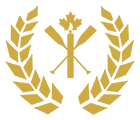
Nominations for the Governor General's History Award for Excellence in Teaching are accepted all year round.

